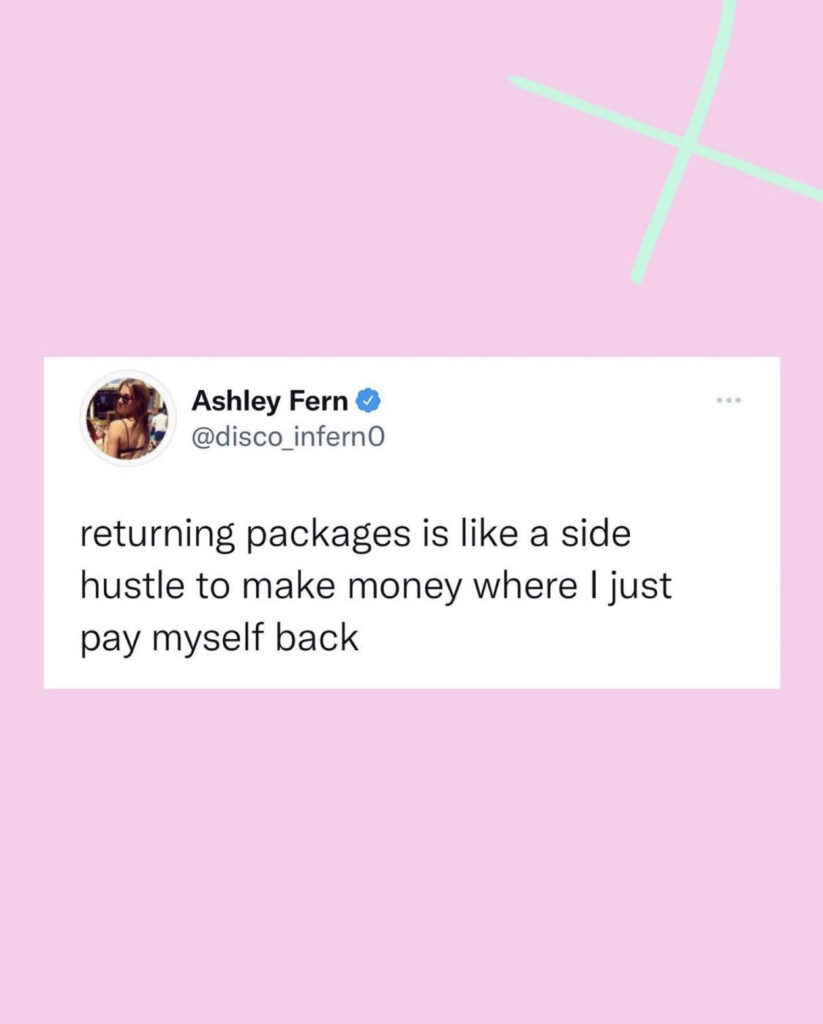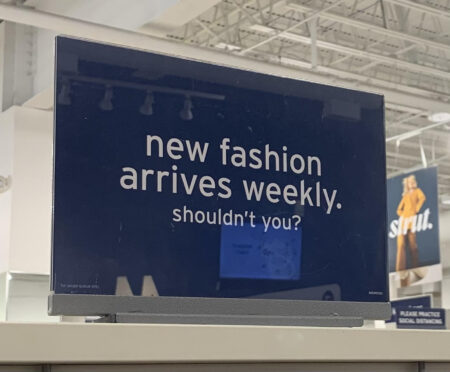..But it’s not exactly our own fault. Here are a few things to consider as you think about fashion and buying in general:
- We are *constantly* bombarded by advertisements. Take 30 seconds to think about where and when you’re exposed to ads in your daily life – on TV, scrolling through social media, in print magazines and newspapers, trying to look at a recipe on someone’s blog, before watching a video, riding the train, walking by a bus stop – it feels like practically everything we do at this point.
- Marketing makes us think we need to buy more with every fashion season, of which there are literally 52 per year now.
- Trends change quickly, so we buy more. Trends repeat only once pieces are safely obsolete to ensure our fanny packs, bucket hats, and tie-dye are long gone by the time they come back. Long live the vintage pieces and wear the heck out of them if you want to, but if the pieces we buy to follow the trends are low-quality, they won’t last long enough to see the trend come around again. This has become a business of intentional garbage generation.

- Online shopping and fast, free shipping has made everything so accessible that it’s given people unrealistic expectations of instant gratification. We’re blind to the fact that materials and goods are being shipped back and forth across the globe, made faster by workers staying long hours, and delivered by drivers who aren’t afforded basic breaks.
- Returns have also become so easy, we buy more simply to return it. Unfortunately, very little actually makes it back to be resold – most returns are just thrown away. This video from CNBC is a very important watch that explains the dark side of returns.

- I don’t know about you, but my heart rate picks up when I see “X% off” and the higher the “X,” the higher my heart rate goes. This is a reaction that has been programmed into us. Stores constantly have “sales” to make us *think* we’re getting a good deal. If clearance is an additional 75% off, how much more likely are you (or am I!) to buy a ton of stuff you don’t need or really want? Plus, why is the store trying so hard to get rid of certain pieces? Maybe because if they don’t sell, they’ll just end up in the trash.
- We’re used to getting things cheap. Now, I’m not knocking getting a good deal on something you need or actually want by any means, but cheap prices usually mean exploited workers forced to cut corners resulting in low-quality c-r-a-p. The workers, the customer, and the planet all lose in this scenario. We no longer hold value in any of the pieces we have if we know there’s no quality from the start. If I spend $13 on a pair of cheap boots, why do I care if the heels start wearing out after a couple of months? Why would I invest in getting them repaired if the repair is going to cost more than what I initially paid? The logical thing to do is throw them out once they start looking bad and buy another pair. The cycle continues. What would happen if we valued the items we bought and instead invested a fair amount of money in fewer pieces so that we could ensure they were ethical, high-quality, and worth maintaining for a long time?

